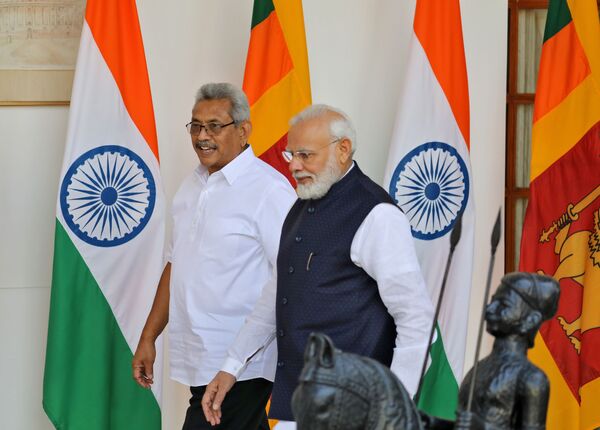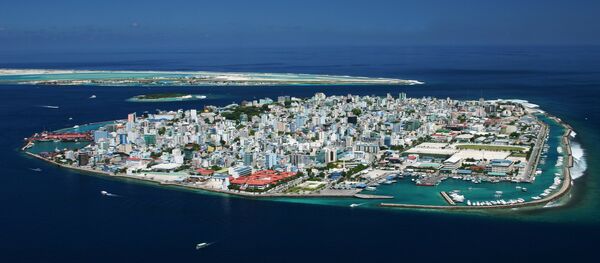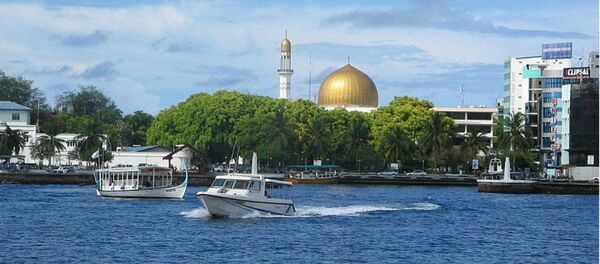India’s Minister for External Affairs, in a high-decibel announcement, informed the Maldives that New Delhi would fund the nation's largest civilian infrastructure project—the Greater Malé Connectivity Project (GMCB)—through a $100 million grant and a $400 million line of credit.
While it was not claimed officially, the announcement was made in a way that sent a message to Beijing that New Delhi has taken the lead over China in their contest for influence in the Maldives. This has been a major victory for New Delhi, as China was competing for a similar project after it snatched several projects in Nepal post-2015, when India reportedly stopped providing essential services over an issue related to the constitutional amendment in the Himalayan nation.
Earlier this month, China met Afghanistan, Nepal and Pakistan to forge “four-party cooperation” to continue infrastructure projects under its Belt and Road Initiative (BRI). In the past few months, China’s penetration in India’s neighbourhood has gone into top gear. with all its neighbours receiving heavy investment under the BRI.
With the rising economic clout of China in South Asia, Indian Prime Minister Narendra Modi launched a veiled attack on countries leveraging development partnerships in developing nations during his address at the inauguration of the Supreme Court building in Mauritius earlier this month.
While stating that India’s development partnership doesn’t come with any conditions, Modi said that historically, nations had been forced into lopsided partnerships, resulting in their dependency on foreign powers.
Nevertheless, China categorically denied the allegations made by a certain section of the world that it played a zero sum game in India’s neighbourhood.
“China's co-op with developing countries are for common development, not for playing one partner against the other. For China and Maldives, it is of mutual benefit, not a zero-sum game,” Zhang Lizhong, Chinese Ambassador to Maldives said on 20 August.
According to the American Enterprise Institute’s China Global Investment Tracker, China has committed an investment of around $100 billion in the economies of Afghanistan, Bangladesh, the Maldives, Pakistan, Nepal and Sri Lanka, with major funding going to the energy and transportation sectors.
The internal calculation of these countries indicate that trillions will be needed to fill the gap in infrastructure funding.
Demolishing India’s Buffer Zones
A professor of Chinese studies at Jawaharlal Nehru University in New Delhi, Srikanth Kondapalli, believes China’s investments are politically motivated, and not the result of of some commercial profit-making rationale, as is generally seen globally. While he dismisses concerns for India emerging from Chinese investments, he raises an important point on how commercially unviable projects leave countries which are part of China's BRI in debt.

One such is example is Sri Lanka’s Hambantota port, which has been leased to China for 99 years. In 2017, former Prime Minister Ranil Wickremesinghe had announced that the country wouldn’t be able to pay back the loans taken to build the project.
Following which, he agreed to lease the port for 99 years to a venture led by China Merchants Port Holdings Co. in return for $1.1 billion. For this reason, India has been vocal with its criticism of the BRI, which has been burdening other nations with debt.
Kondapalli says that with the countries being India’s immediate neighbours, it has to manage the clean-up. On 12 July this year, former president of Maldives Mohamed Nasheed alleged that China had grabbed 12 islands to turn the island nation into its military base; which China denied again.
“With the BRI, the south Asian countries are becoming indebted and India has to do the clean-up and this is a huge burden on India. If these projects are commercially-viable, profit-making, then India has no concerns on these BRI projects,” Kondapalli says.
Pakistan has to pay about $615 million to China between May 2020 and June 2021 for debt incurred through the BRI projects. Similarly, Central Asian countries like Tajikistan and Kyrgyzstan are also in talks with China for debt relief amid the COVID-19 crisis.
“Rising anti-China sentiments in these countries could lead to an increase in terrorist recruitment, which will have severe repercussions for India. It is thus necessary for India to revisit its foreign policy with greater vigour in the post-COVID-19 world, to curtail Chinese aggression in its immediate and extended neighbourhood,” observes Ayjaz Wani, a Research Fellow at Observer Research Foundation.
China is actively working to expand its outreach in Bhutan, with which India has a friendship treaty. Recently, China’s foreign ministry highlighted a border dispute with Bhutan and offered a package solution which may include a land swap with Thimphu.
Options Before India
Countering China’s expansion in the Indian Ocean region and South Asia, India has expedited its operations in Bangladesh, Sri Lanka, Mauritius etc., under its SAGAR mission (Security and Growth for All in the Region).
In the second term of the Narendra Modi government, the foreign ministry promised to expedite the delivery in time bound manner to the foreign countries. “We delivered the projects in time bound manner and in a transparent way. This was the perception which we done away with,” foreign ministry official told Sputnik in New Delhi.
Regarding what options India has, as it will have to face economic slowdown for the next few years due to COVID-19, the official said, “China is reality. But, we will not remain a mute spectator despite slowdown. A few years back, experts were saying that India lost the Maldives completely but you can see things have changed in a year.”
If India-friendly nations are turning to China due to New Delhi’s inability to fulfil its projects in these countries, Kondapalli says most of these projects have been completed, but wherever there are problems, they are mainly because of geopolitical issues.








